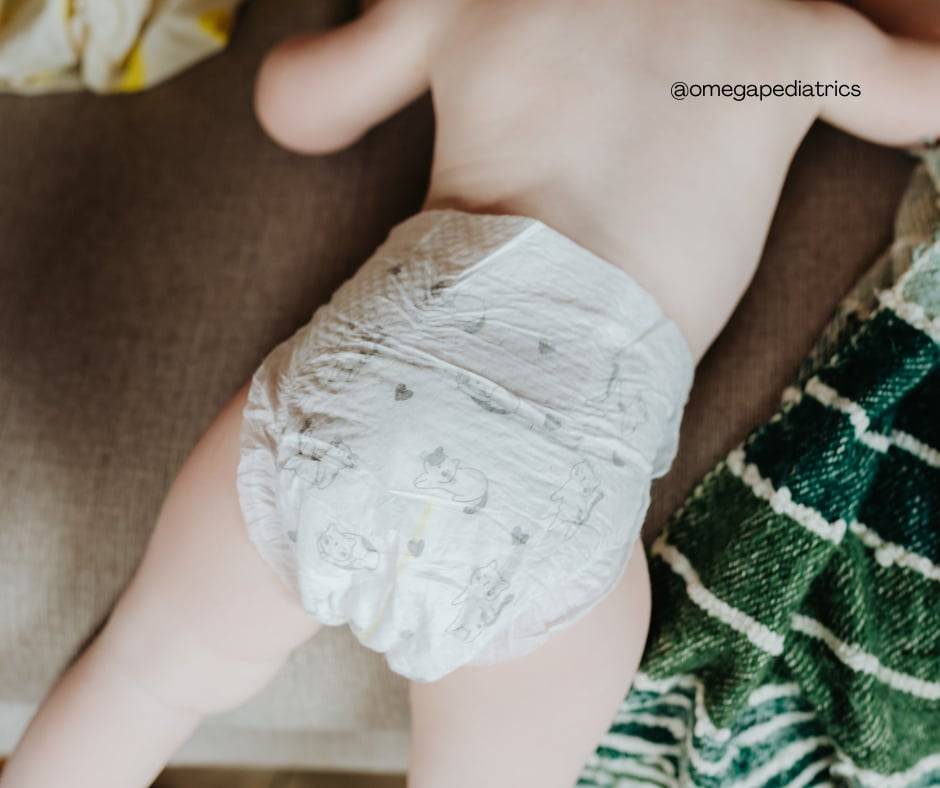Welcoming a new baby into the family is an exciting, joyous, and overwhelming experience. One of the crucial decisions new parents face is how to feed their baby. Although health experts recommend breastfeeding, there are many reasons parents choose or need to bottle feed.
We at Omega Pediatrics have drawn up this comprehensive guide that will help you navigate the world of bottle feeding. We hope you gain essential knowledge and confidence that your baby receives the best care and nourishment possible. Read on to navigate the ins and outs of bottle feeding, ensuring a healthy start for your little one.
Why Many Mothers Choose Bottle Feeding?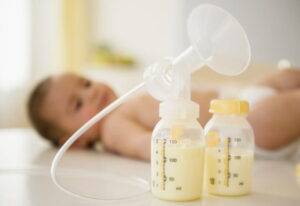
Bottle feeding involves feeding your baby formula or expressed breast milk using a bottle. It can be a convenient and flexible option for many families. Whether you’re supplementing breastfeeding, transitioning from breastfeeding, or starting with bottle feeding from the beginning, here are the reasons why parents choose bottle feeding:
- Convenience: Bottle feeding is more convenient, especially for working parents or those with a busy schedule. It allows flexibility in feeding times and enables other caregivers to feed the baby.
- Sharing Feeding Responsibilities: Bottle feeding allows parents and other family members to share the responsibility of infant feeding. This strengthens family bonds and gives the primary caregiver a much-needed break.
- Medical Reasons: Some mothers have medical conditions or take medications that make breastfeeding difficult or unsafe. In these cases, bottle feeding with formula or expressed breast milk is a healthy alternative.
- Feeding Challenges: Some babies have difficulty latching or nursing, making breastfeeding stressful for the mother and baby. Bottle feeding provides a more controlled and less frustrating feeding experience.
- Monitoring Intake: Bottle feeding allows parents to monitor and measure how much milk the baby consumes. This is a helpful set-up for assuring the baby is getting enough nourishment.
Choosing the Right Bottle and Nipple
The market is flooded with various types of bottles and nipples, which can be overwhelming for new parents. Choose the right bottle and nipple, considering your baby’s needs, and the family’s lifestyle and preferences. The right combination of bottle and nipple makes feeding time comfortable and enjoyable for you and your baby.
1. Bottle Material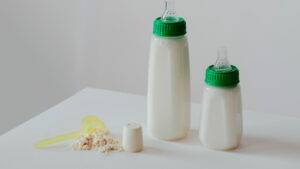
- Plastic Bottles: Lightweight and durable, but ensure they are BPA-free to avoid harmful chemicals.
- Glass Bottles: Eco-friendly and free of chemicals, but they’re heavier and can break easily.
- Silicone Bottles: Flexible and durable, but usually more expensive.
2. Bottle Shape
- Standard Bottles: Straight and narrow, easy to hold and clean. However, these can’t effectively reduce gas and colic as much as other shapes.
- Wide-Neck Bottles: Mimic breastfeeding by having a wider nipple base, reducing nipple confusion for breastfed babies. However, finding compatible nipples and accessories can be challenging, as these aren’t common.
- Angled Bottles: Designed to prevent air from getting into the nipple, helping reduce gas and colic. The drawback is that these are slightly difficult to clean due to their shape.
3. Nipples
- Material: Silicone nipples are durable and easy to clean, while latex nipples are softer but may wear out faster and some babies may have latex allergies.
- Flow Rate: Newborns require slow-flow nipples, while older babies can handle medium and fast-flow nipples. The right flow rate ensures your baby isn’t overwhelmed or frustrated during feeding.
Choosing the Right Formula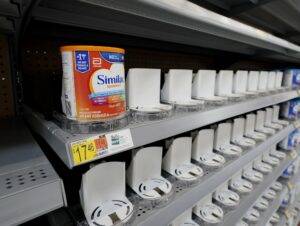
- Cow’s Milk-Based Formula: Most common and suitable for most babies, providing a balanced mix of nutrients for healthy growth.
- Soy-Based Formula: Made from soy protein, it’s suitable for babies who are lactose intolerant or have a cow’s milk protein allergy. This can be an alternative for vegetarian families or those avoiding animal products.
- Specialized Formulas: These are specially formulated for babies with specific health requirements. These are pediatrician-recommended to address particular health concerns. Suitable for premature babies, or those with allergies or digestive issues.
The Preparation and Storage
- Preparing Formula: Always wash your hands and sterilize bottles, and nipples before use. Follow the manufacturer’s instructions precisely for mixing formula. Use boiled and cooled tap or bottled water.
- Storing Formula: Prepared formula should be used within two hours if kept at room temperature or stored in the refrigerator for up to 24 hours. Never reheat formula more than once, and discard any leftover formula after feeding.
Bottle Feeding Techniques
Feeding your baby with a bottle involves more than just placing the nipple in their mouth. Here are some techniques to ensure a successful feeding session:
- Positioning: Hold your baby semi-upright, supporting their head. Ensure the bottle is tilted so the nipple is always full of milk to prevent air intake, which causes gas.
- Pace Feeding: Mimic breastfeeding by allowing your baby to take breaks and control the milk flow. Hold the bottle horizontally, letting the baby suck and swallow, then tip the bottle down to give them a break.
- Burping: Burp your baby after every 2-3 ounces of milk or when they seem uncomfortable. Hold your baby against your shoulder or sit them on your lap, gently patting or rubbing their back.
Overcoming Feeding Issues
It’s common for new parents to encounter some challenges during bottle feeding. Here’s how to identify and address them:
- Gas and Colic: Ensure your baby isn’t swallowing too much air using anti-colic bottles and nipples. Burp your baby frequently and gently massage their tummy to relieve discomfort.
- Spit-Up and Reflux: Ensure your baby is upright during feeding and maintains that position until 20–30 minutes after feeding. Use smaller, more frequent feedings to reduce spit-up.
- Allergies and Sensitivities: If your baby shows signs of allergies (rash, vomiting, diarrhea), consult your pediatrician. They may recommend switching to a different formula.
Cleaning and Sterilizing Bottles
Maintain a hygienic environment, especially when handling feeding stuff for your baby. Keep feeding equipment clean to prevent infections and safeguard your baby’s health. It’s recommended to have cleaning aids dedicated to your baby’s stuff.
- Washing: Rinse bottles, nipples, and other parts with warm water immediately after use. Use a bottle brush and mild dish soap to clean all parts.
- Sterilizing: Boil bottles and nipples for 5 minutes or use an electric steam sterilizer. Some dishwashers have a sanitizing cycle that can be used for bottles and nipples.
- Drying: Let bottles and parts air dry on a clean towel or drying rack. Avoid using a dish towel to prevent contamination.
Transitioning to Solid Foods
As your baby grows and develops, you must transition from bottle feeding to solid foods. Here’s how to make this transition smooth:
- Signs of Readiness: Babies are ready for solids around 6 months old. Look for signs like sitting up with support, showing interest in food, and the ability to swallow.
- Gradual Introduction: Start with single-grain cereals or pureed vegetables and fruits. Introduce one new food at a time and watch for any allergic reactions.
- Maintain Bottle Feeding: Continue bottle feeding with solids until your baby is at least one year old. Gradually reduce the frequency of bottle feedings as your baby’s solid food intake increases.
The Emotional Aspect of Bottle Feeding
Bottle feeding can be a bonding experience for parents and the baby. Here are some tips to enhance this emotional connection:
- Eye Contact: Maintain eye contact with your baby while feeding to strengthen your bond.
- Skin-to-Skin Contact: Hold your baby close and engage in skin-to-skin contact during feeding times.
- Involve Other Family Members: Bottle feeding allows other family members to participate in the feeding routing, thus fostering a stronger family bond.
Seeking Support and Resources
- Pediatrician: Your baby’s doctor can provide personalized advice and address any concerns you may have. Omega Pediatrics is highly recommended for its expertise and professional guidance on your baby’s health.
- Lactation Consultants: These are professionals with expertise in assisting with transitioning from breastfeeding to bottle feeding and addressing any feeding-related questions.
- Parenting Groups: Joining a parenting group provides emotional support and practical tips from other parents.
Choose Bottle Feeding for Your Baby
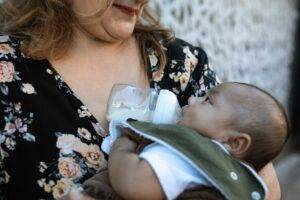 Bottle feeding is a viable, flexible, and nourishing option for many families, offering numerous benefits. By understanding the basics—choosing the right bottle and nipple, preparing and storing formula correctly, mastering feeding techniques, and addressing common issues—you ensure a positive feeding experience for you and your baby.
Bottle feeding is a viable, flexible, and nourishing option for many families, offering numerous benefits. By understanding the basics—choosing the right bottle and nipple, preparing and storing formula correctly, mastering feeding techniques, and addressing common issues—you ensure a positive feeding experience for you and your baby.
Whether you choose to bottle feed from the start or transition from breastfeeding, you’re choosing to meet your baby’s needs for healthy development and do what best suits your family’s needs and preferences. Embrace this journey, seek support when needed, and cherish these precious moments with your baby.
With the right knowledge and practices, your baby thrives and develops healthily. We at Omega Pediatrics respect the mother’s decision to bottle-feed their baby. What’s important is that your baby is afforded love, care, and proper nourishment.


